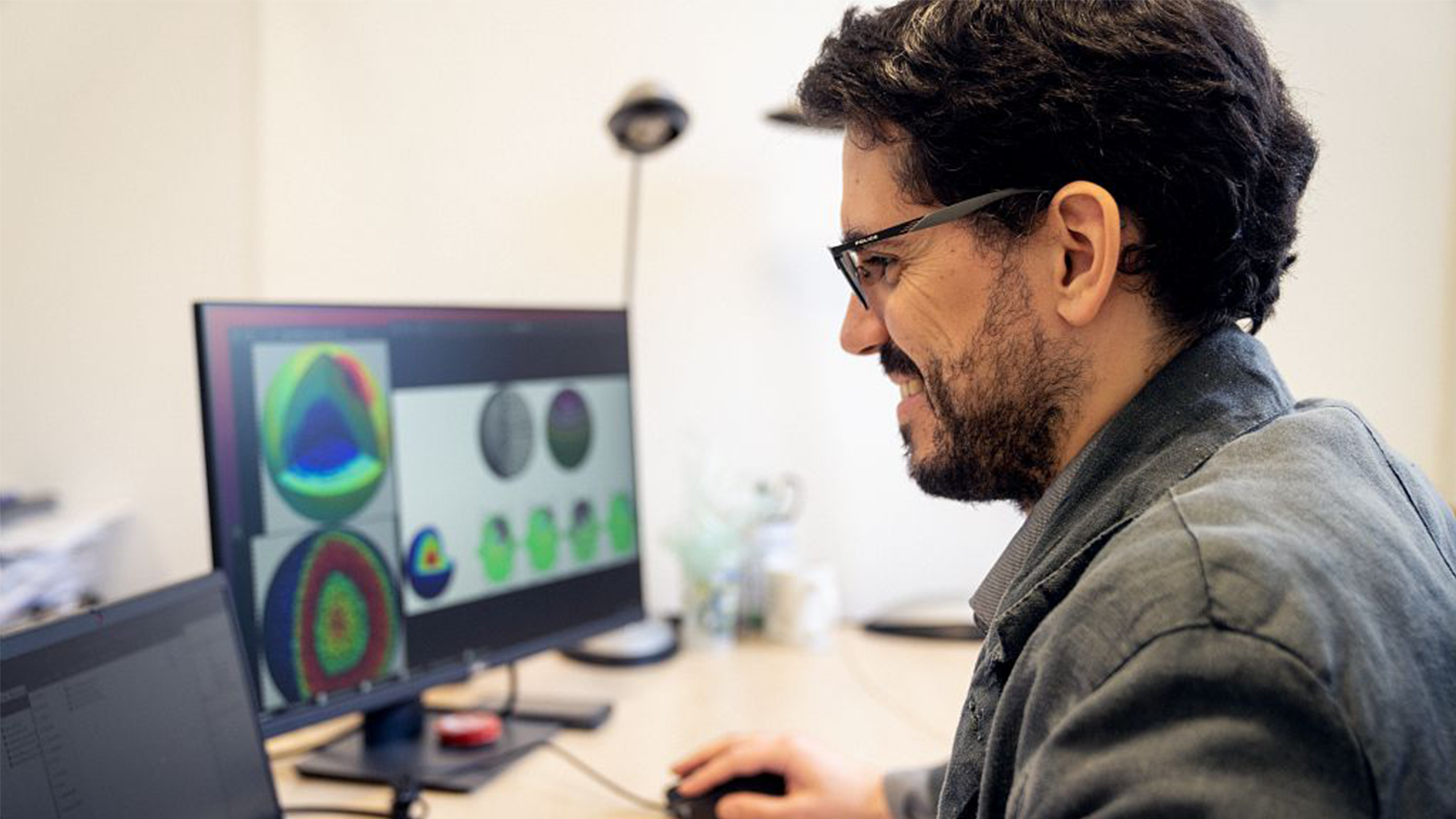From the Earth to the Sun: what seismic waves tell us
Date:
Changed on 08/11/2023

To study environments to which he doesn't have access, Florian Faucher solves what are known as "inverse problems". In science, the solution to an inverse problem involves determining the causes of a phenomenon from observations of its effects.
"The project focuses on the study of the Earth and the Sun. We need both to reconstruct the internal structures of objects to which we have no access, and also to monitor their evolution, all without altering them. This is an important point in the inverse problems I'm looking at: we need to develop a non-intrusive methodology for characterizing and monitoring environments."
To successfully reconstruct environments without having direct access to them, the winner of the ERC Starting grant is going to use waves. "The waves that propagate interact with the interior of the environment, so their propagation is impacted by the structures encountered, which enables us to extract information about the media they have passed through", emphasizes the researcher from the Makutu project-team based at the Université de Pau et des Pays de l'Adour.
In his project, the scientist is focusing on seismic waves: "Whether it's the Earth or the Sun, seismic waves are measured at the surface, but we need to reconstruct the different environments they have passed through at depth". So, from the wave fields (measured by instruments on the ground or by satellites for the Sun), we need to deduce the physical properties of internal structures, and also detect any anomalies signalling a change in the environment, by comparing data sets.
Several phenomena are responsible for the propagation of waves in a medium. There are uncontrolled or even natural sources, such as microseismicity. "The Earth is constantly vibrating, and it's all these little vibrations that we can measure. We can sometimes use traffic, as when a train passes over a track. This will generate vibrations that will propagate inside the Earth. As for the Sun, the waves are stochastically generated by turbulent convection.
Traditionally, waves whose origin is controlled are used for targeted experiments. "Using waves whose source is controlled gives us greater control over the phenomena. However, my research project will focus on the use of natural sources and, of course, we don't have this option for the Sun anyway!
To extract information from the oscillations that are measured and analyzed, the INCORWAVE project relies in particular on the correlation of seismic wave signals, "using wave correlation allows us to free ourselves in a way from precise knowledge of the sources that generate the measured waves, by bringing out the signature of the wave's interaction with the medium. This opens up new prospects for a more complete use of the signals measured".
The first step is to develop numerical tools to simulate wave propagation. "The simulations have to be as faithful as possible to the physics of the medium, and at the same time, we have to find the right hypotheses to avoid overdetermining the system: it's a compromise between precision and the relevance of approximations", explains the young scientist. The cost of calculation can become a prohibitive factor. "One of our objectives is to simulate waves by considering 3D flows for the entire Sun, a numerical challenge that requires appropriate methods, making efficient use of computing resources."
After the wave simulations, the second step is to reconstruct the properties of the media. "Our wave simulations depend on the physical parameters of the medium, and as part of the inversion, we have to somehow recover the properties that best reproduce the observations."
For accurate reconstruction of media, however, models cannot always be simplified, at the risk of losing information. "In the project, we want to take a hierarchical approach, to gradually reconstruct the environments. By increasing the complexity of the models step by step, we'll be able to achieve a more detailed reconstruction. The key is to have a relevant and precise progression, i.e. one that takes into account the different physical phenomena, starting with the most i
"With this project, we hope to reconstruct environments more accurately, making the best possible use of available data", concludes the research manager. "For the Earth, the applications will include monitoring the subsurface, for example to get an idea of how underground reservoirs will evolve over time, and how we can anticipate changes, etc. For the Sun, we'll be trying to gain a better understanding of its dynamics, the various phenomena that take place inside it and, more generally, the physics that govern it."